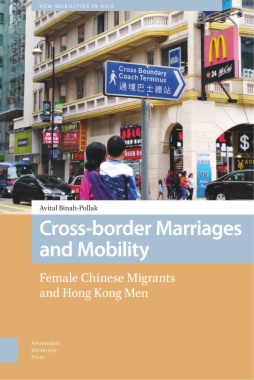Cross-border Marriages and Mobility: Female Chinese Migrants and Hong Kong Men focuses on cross-border marriages between mainland Chinese women and Hong Kong men, a phenomenon which is of critical importance to the transformation of Hong Kong. By examining the women’s motivations for migration and lived experiences in relation to the discursive, political, economic, and social circumstances of mainland China and Hong Kong, Avital Binah-Pollak demonstrates how these marital practices are causing the expanding and blurring of borders, so that there is a much wider strip of border in which the dichotomies of the rural/urban, periphery/center, and hybrid/national identities become more complex and negotiable. While this is particularly interesting and valid in the case of the border between mainland China and Hong Kong because of the particular nature of the relationship between these two societies, it may also apply to borders between many other societies worldwide.
- Cover
- Table of Contents
- Acknowledgments
- Introduction
- Gender and im/mobility
- Marriage-related migration
- Cross-border marriages between mainland Chinese women and Hong Kong men
- Chapter outline
- Methodological issues
- 1. The Hong Kong-China Border: A Space of Confinement and Movement
- The border as a theoretical concept
- Policy making of distinction between the mainland and Hong Kong
- Winds of change: Hong Kong’s return to Chinese sovereignty
- The border between Hong Kong and mainland China: A specific type of boundary
- 2. Motivations for Crossing Borders
- Policy and im/mobility
- A-lin’s narrative
- Suzhi and im/mobility
- ‘In order to move up, you need to move elsewhere’ (Vertovec, 2009: 1)
- Hong Kong as a desired destination
- The HKID: The significance of institutional mobility
- Desire for and consumption of Hong Kong’s high ‘quality’ commodities
- 3. ‘Same as Before, Living as a House Wife’
- The metaphysical level: A gendered impact on the gap between the rural and the urban sector
- The structural level: ‘nan zhu wai; nu zhu nei’
- The individual level: Social gatherings and social relations as empowering strategies
- The geographic level: Transnational ties
- 4. Hong Kong’s Education: A Bridge to the ‘First World’
- The gap between rural and urban education in mainland China
- Quality (and) education
- Education and caretaking in everyday life
- 5. New Voices in Hong Kong: Local Identity Formation
- After the handover: Hong Kong people’s (growing) sense of belonging
- What can ‘we’ do?
- Urban Resistance
- Concluding Thoughts: Home Is not where the Heart Is but where it Wants to Be
- Inclusion and Exclusion
- Mobile identities
- From border to boundary
- Bibliography
- Index
- List of Figures and Tables
- Figure 1.1 Hong Kong returns to Chinese sovereignty propaganda poster
- Figure 2.1 Bu pingdeng (‘Not equal’)
- Figure 2.2 Shops in Sheung Shui and mainland shoppers
- Figure 2.3 Mainland traders at the Shenzhen train station selling Hong Kong commodities
- Figure 4.1 ‘Clever and pretty, healthy and lovely’
- Figure 4.2 ‘Do a Good Job in Family Planning to Promote Economic Development’
- Figure 4.3 My daughter’s English homework at the kindergarten
- Figure 4.4 My daughter’s math homework at the kindergarten. She rarely received more than two stamps.
- Figure 4.5 A spreadsheet provided to the parents about the preparations for mid-term examinations in the kindergarten
- Figure 5.1 The poster of the Tiananmen demonstrations’ outcome in the artists’ apartment at Woofer Ten
- Figure 5.2 ‘Fighting for freedom’, 2013
- Table 1 One-Way Permit holders entering Hong Kong by gender (these numbers are comperatives, i.e. the number of males entering for every 1000 women entering)
- Table 2 Number of marriages with brides from the mainland and grooms from Hong Kong

